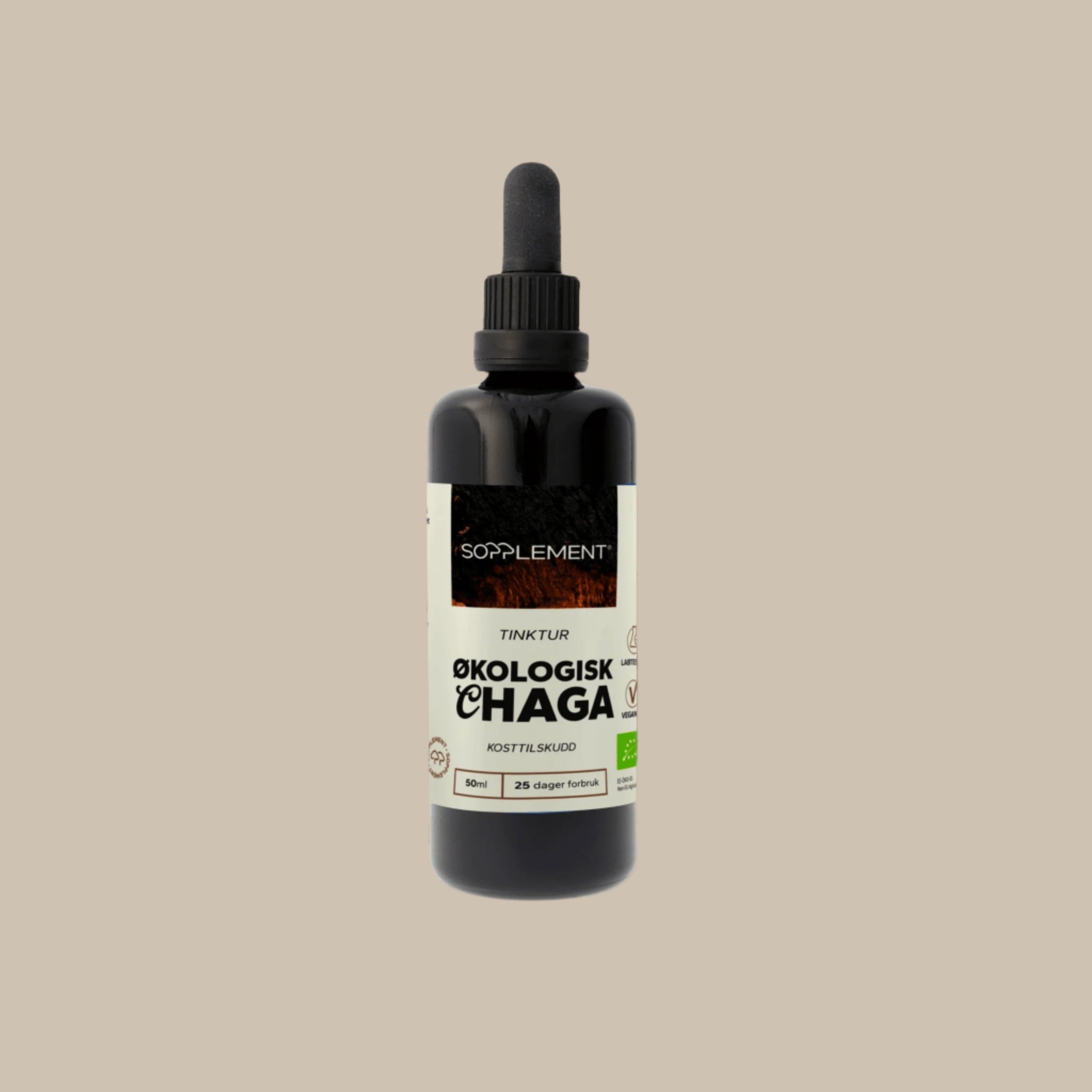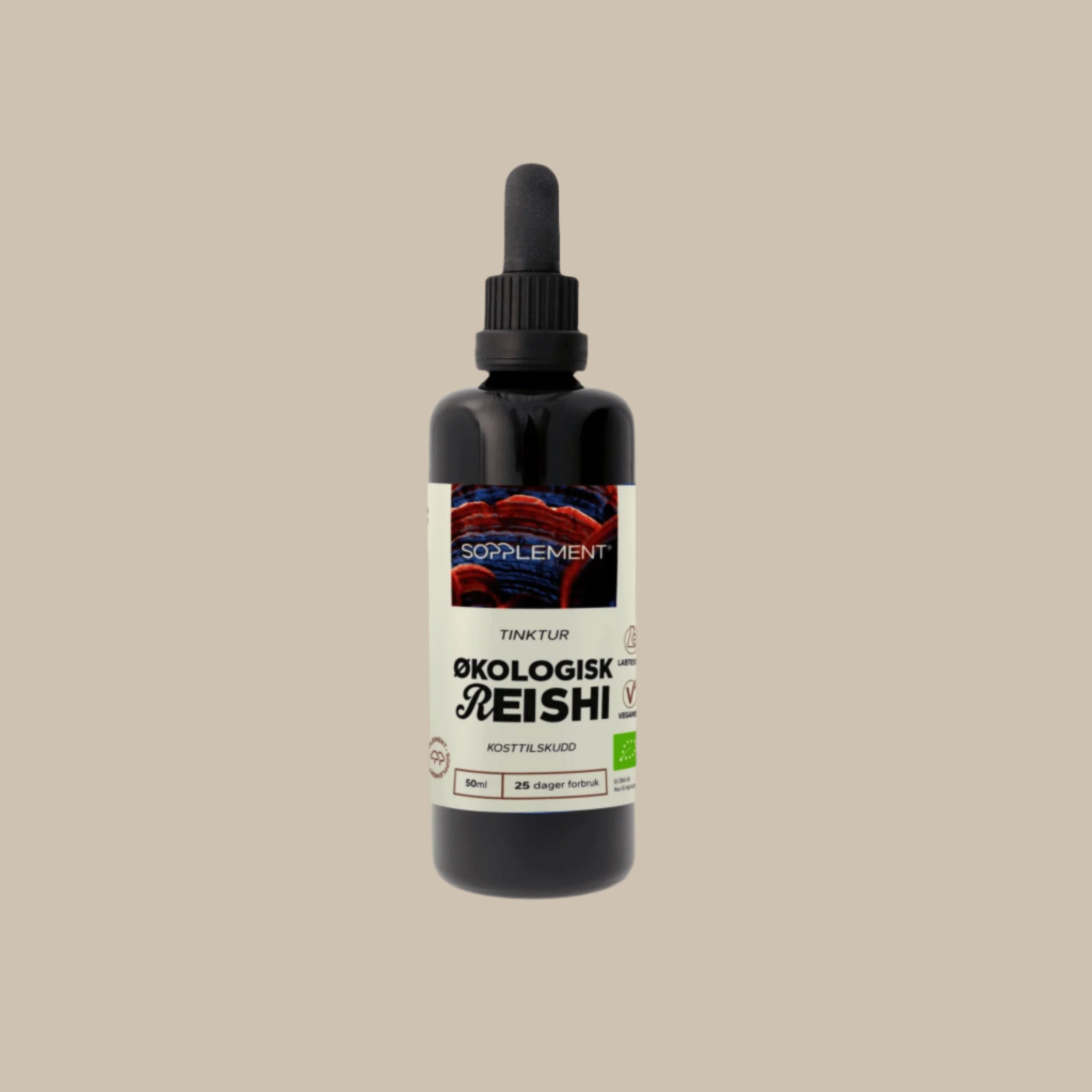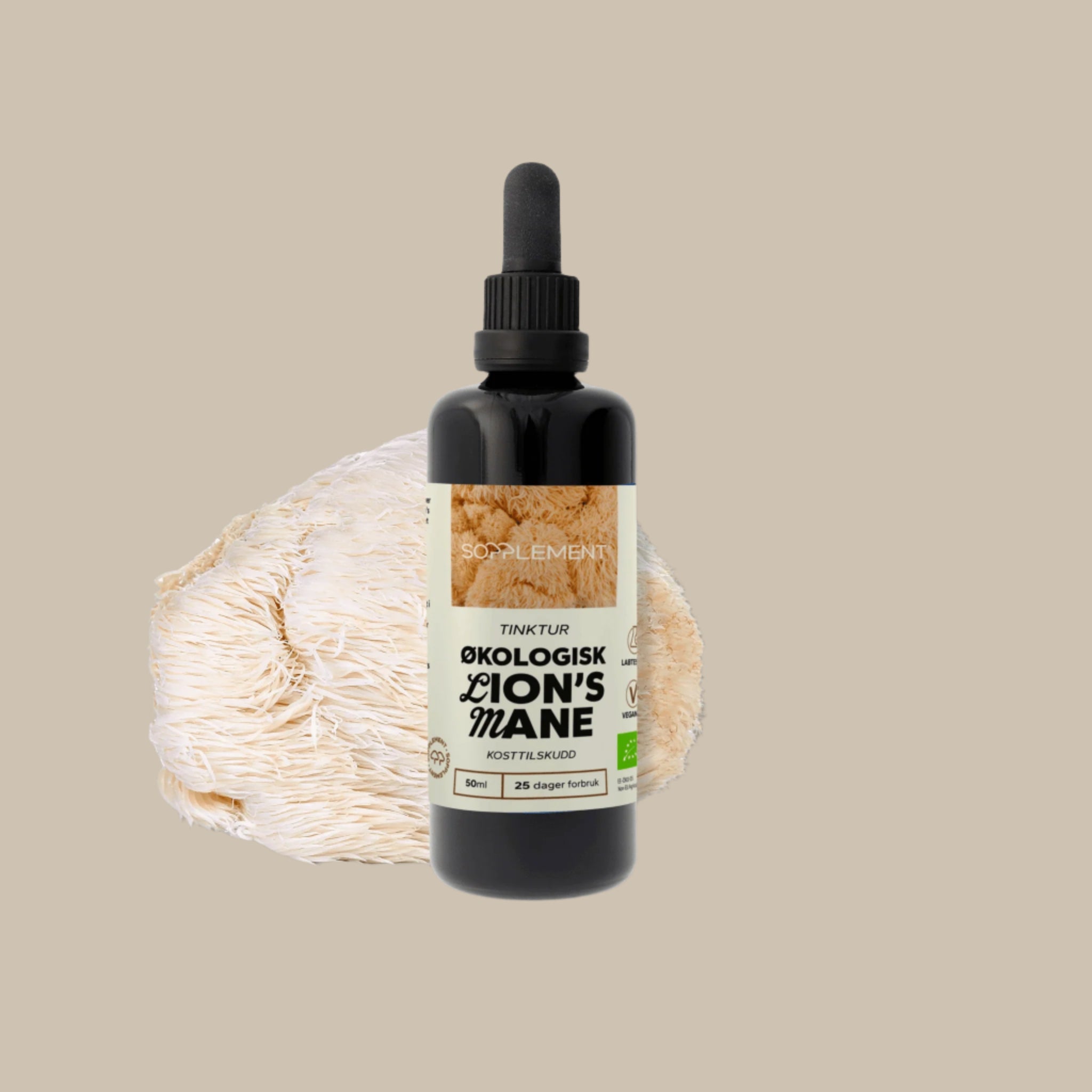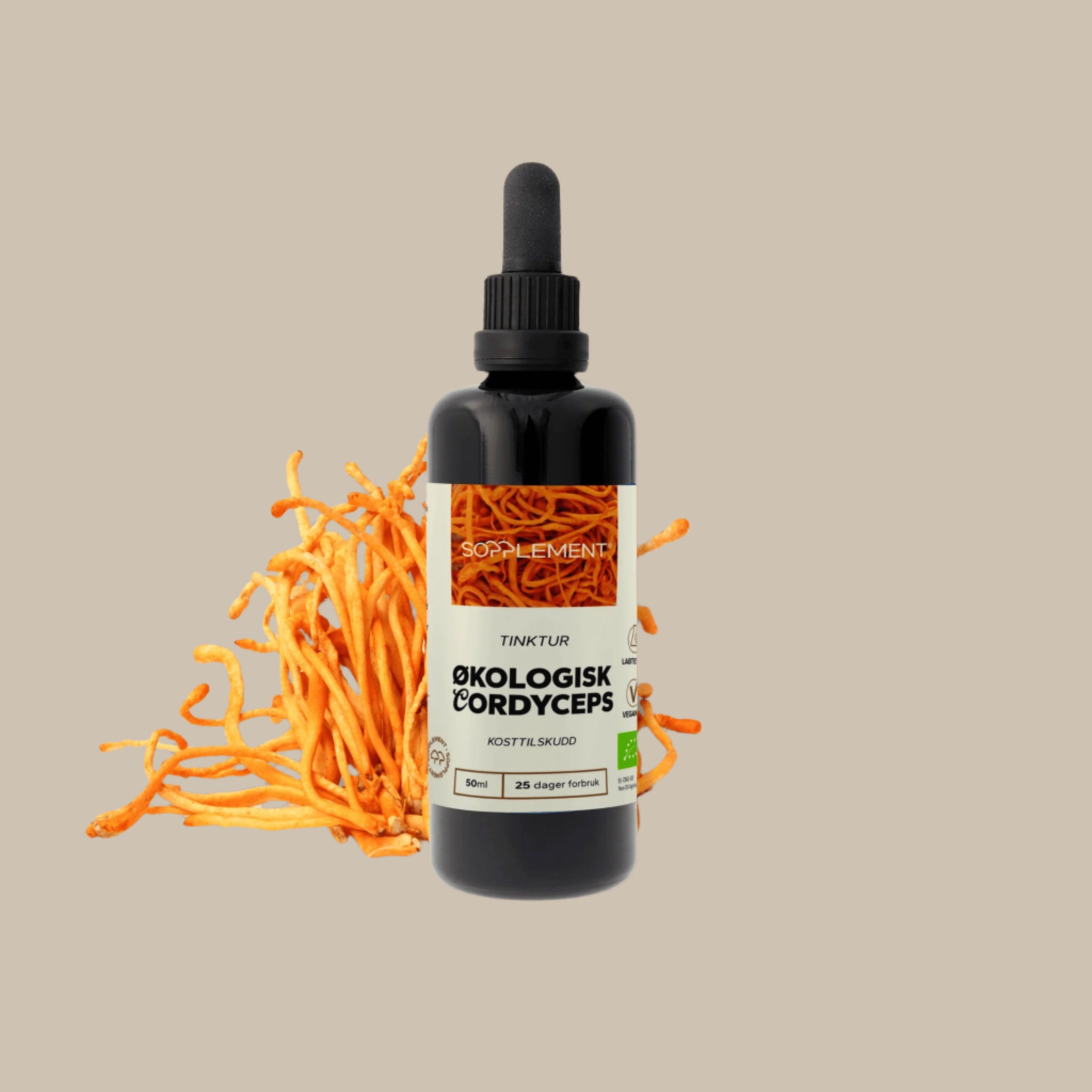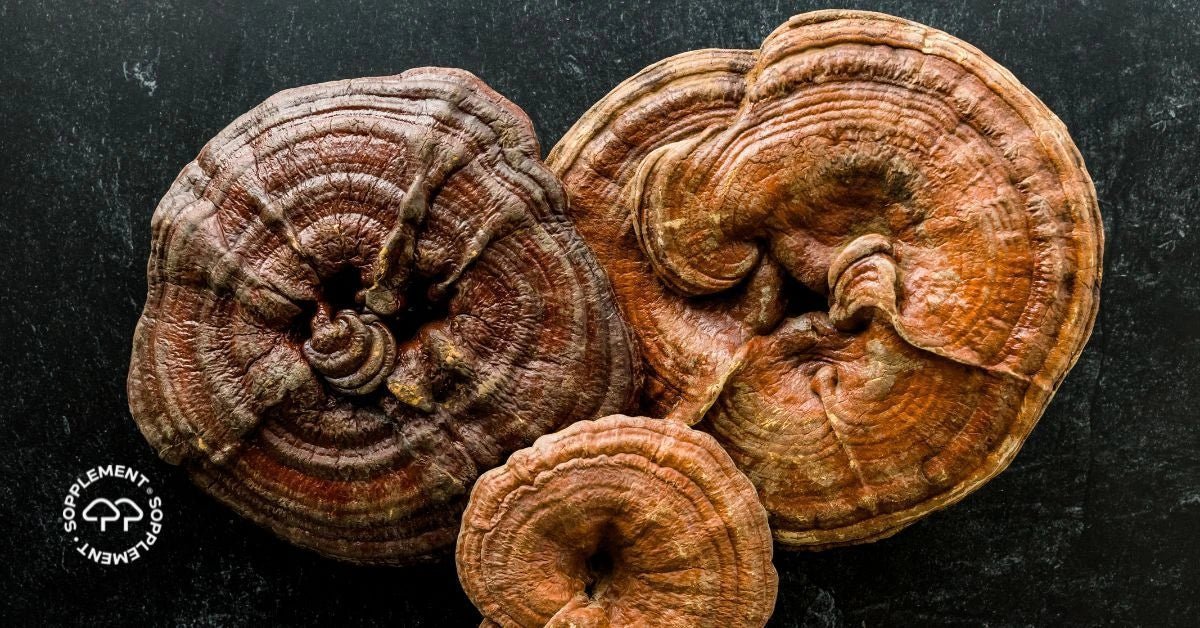
Everything you need to know about Reishi
A complete guide to Reishi (Ganoderma lucidum) for those curious about natural wellness and functional mushrooms
What is Reishi?
Reishi is a medicinal mushroom with a characteristic reddish-brown, shiny cap. It grows naturally on deciduous trees in Asia, but is now cultivated all over the world.
Reishi is often called a " functional mushroom " because of nutrients such as polysaccharides, triterpenes, and antioxidants – compounds that researchers have shown particular interest in in recent decades.
Historical use
Traditional Chinese Medicine
Reishi has been used for over 2,000 years in traditional Chinese medicine , where it is known as lingzhi – “the mushroom of spiritual strength and long life.” It was considered so valuable that only emperors and Taoist monks had access to it.
Also used in Japan and Korea
In Japan, Reishi is called mannentake , and has been used in folk medicine to strengthen the body and mind. In Korea, Reishi has long been recognized for its ability to “balance energy” in the body.
Source: Rolv.no about Reishi (Ganoderma lucidum) - for a useful review of Reishi's historical use.
Potential health benefits
Reishi contains several bioactive compounds such as:
- Beta-glucans – a type of polysaccharide that has been studied for its role in immune response
- Triterpenes – compounds known for antioxidant properties
- Phenols – with potential to support the body's own protective systems
Source: Herbal Medicine: Biomolecular and Clinical Aspects. 2nd edition .
Although more research is needed on humans, laboratory studies and experiments show promising results.
How is Reishi used?
Form, dosage and timing
How is Reishi consumed - and what does the extraction method mean?
Reishi is not suitable as an edible mushroom, it is bitter with a hard consistency. The most common way is to make a tea or extract, depending on the nutrients you need.
Raw or dried Reishi
Reishi must be boiled for one to two hours to release water-soluble nutrients. The liquid is then drunk as a tea. This mainly provides access to polysaccharides (especially beta-glucans), phenols, and some antioxidants.
For triterpenes and other fat-soluble substances, it must be extracted in alcohol.
Benefit: Natural and holistic
Disadvantage: Requires time and often provides lower concentration than modern extracts
Easy extraction (water or alcohol)
Simple extraction means that the mushroom is steeped in hot water or in alcohol , but not both.
- Water-based extract mainly yields polysaccharides such as beta-glucans
- Alcohol extract extracts fat-soluble compounds such as triterpenes
Advantage: Effectively captures a group of active ingredients
Disadvantage: Omits other important connections
Double extraction - full spectrum
Double extraction is a holistic method where you steep the mushroom in boiling water and alcohol. Then you combine the liquid from both to access the water-soluble and fat-soluble substances.
Studies suggest that the combination of nutrients has synergistic effects in the body. Double extraction mimics traditional use where both boiling and storage in alcohol have been used for thousands of years.
Advantage: Broad spectrum of active compounds
Disadvantage: More complex process
How medicinal mushrooms are extracted is so important to the effectiveness of a supplement that we have a separate article about this here: What is double extraction - how is the active ingredients affected .
Bioavailability and absorption
Because the extraction method determines which bioactive compounds are actually released from the mushroom , it has great significance for which substances are accessed and how they can be absorbed into the body.
Compounds such as beta-glucans, triterpenes and phenols are bound to the cell walls of the hard fruiting body. These cell walls consist of, among other things, chitin, which the body cannot break down effectively.
The active ingredients must therefore be released using heat and/or solvents (alcohol) before they become available.
Can Reishi be combined with other adaptogens?
Reishi is often combined with other adaptogens such as functional mushrooms, plants and herbs. In natural medicine, a holistic treatment program is often offered where they are combined.
Reishi has traditionally been used to balance the body and reduce stress, so it can complement other adaptogens well.
Reishi and other functional mushrooms
Reishi and Lion's Mane
Lion's Mane is often associated with focus and mental clarity. Combined with Reishi, it can be a great combination when you need calm and presence - reflection, sleep and inner processes.
Reishi and Chaga
Chaga is known to be rich in antioxidants, and has grounding and strengthening properties. Both Reishi and Chaga are often combined in tea and cocoa when one wants to strengthen and balance the system.
Reishi and Cordyceps
Cordyceps is more energizing and is often used in the morning or before physical activity, while Reishi can be used later in the day to promote balance and recovery.
Reishi and other adaptogens
In addition to mushrooms, Reishi can be combined with other adaptogens, where many believe there are synergies, especially with regard to stress response, energy, sleep and mental balance.
Ashwagandha - "The Indian Reishi"
Ashwagandha is known for its ability to calm the nervous system, support sleep and help with stress management. Together with Reishi, both can have a calming and supportive effect on the nervous system. Often used together for deeper sleep and recovery.
Rhodiola rosea - Nordic adaptogen
Rhodiola has a more stimulating and invigorating effect than Reishi. It is often used for physical and mental endurance, especially for fatigue and “brain fog.” Together, they can support activation and balancing.
See this article if you want to learn more about adaptogens: What are adaptogens?
In summary - A mushroom for balance and presence
Reishi is a mushroom with deep roots in both nature and tradition. With its many bioactive compounds and its potential to support inner peace, recovery and balance, it has found its place in both tradition and modern lifestyles.
Whether you are interested in using Reishi alone, or in conjunction with other functional mushrooms and adaptogens, it can be a valuable part of a holistic approach to wellness.
Remember that the most important thing is to listen to and take care of your body - the whole thing matters!
Want to learn more? Feel free to explore our articles on adaptogens.
